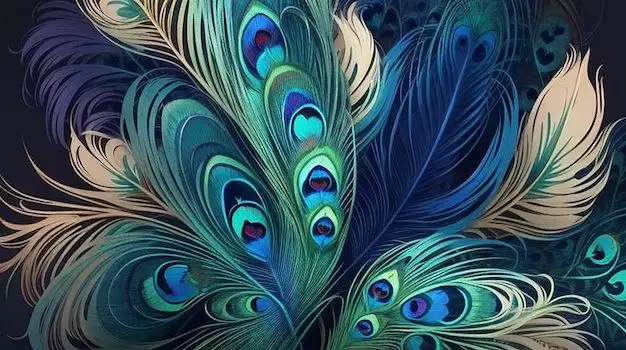Teal blue and peacock blue are two shades of blue that look similar but are actually quite different. Both are medium-toned greens with hints of blue. However, teal tends to be a brighter, more vibrant cyan-green, while peacock has a deeper green-blue tone. There are some key differences between these two popular shades of blue.
Defining Teal Blue
Teal is a medium blue-green color that was named after the common teal bird. The color teal likely got its name in the mid-1600s and started being used in fashion and design in the late 1800s. Teal sits between green and blue on the color wheel. It’s created by mixing blue into a green base. The exact hue can vary depending on how much blue is added.
Teal is a tertiary color, meaning it is created by combining a primary color (blue) and a secondary color (green). Teal contains much more green than blue. It sits beside turquoise on the color wheel, which also contains hints of blue and green but with a higher concentration of blue. Teal tends to have more vibrancy and brightness than turquoise.
In hex code, teal is often defined as #008080, which is an even mixture of green and blue. However, various formulas are used to create different hues of teal. Teal can range from brighter mint or aqua greens to deeper, almost blue-tinged teals. But in general, teal leans more toward the green side of the spectrum than the blue.
Features of Teal Blue
- Bright, vibrant, and lively
- Crisp, cool blue-green tone
- More green than blue
- Creates a relaxing effect
- Associated with nature, renewal, and calmness
Defining Peacock Blue
Peacock blue is named after the vibrant blue and green feathers of a peacock. It emerged as a color name in the late 1800s. Peacock blue sits between blue and green but contains far more blue undertones compared to teal. It’s a deeper, more muted blue-green that sometimes has a slight grayish tone.
Peacock blue is created by mixing a greater portion of blue into a green base. While teal leans more toward the green area, peacock blue skews toward the blue/purple section of the color wheel. Peacock can range from a jewel-toned turquoise to a deeper blue-green with hints of gray. But it consistently contains more blue than true greens like teal.
There are a few different hex codes used to represent peacock blue. Some common ones are #003366, #004E89, and #357EC7. As these suggest, peacock blue takes more blue to create the tone compared to teal.
Features of Peacock Blue
- Deep, jewel-toned blue
- More blue undertones than green
- Muted and grayish
- Gives an elegant, luxurious feeling
- Associated with extravagance, creativity, and individuality
Teal vs. Peacock: Key Differences
While teal and peacock blue look somewhat similar, there are some important differences between these shades:
| Teal | Peacock Blue |
|---|---|
| Bright, vibrant | Deeper, more muted |
| Crisp, cool tone | Jewel-toned and warm |
| More green | More blue |
| #008080 hex code | #003366, #004E89 hex codes |
| Feels calm and relaxing | Feels luxurious and elegant |
While both colors sit between blue and green, teal skews much closer to green while peacock blue contains more blue pigment. Teal pops more while peacock has a deeper, more complex tone. Teal feels crisp, cool, and relaxing. Peacock blue feels warmer and more jewel-toned.
Use Cases for Teal vs. Peacock Blue
Due to their differing tones and associations, teal and peacock blue tend to be used in slightly different ways:
Teal Blue Uses
- Bathroom or kitchen decor – Creates a relaxing, spa-like feel
- Accent walls – Pops against white or neutral backgrounds
- Teal gemstones like agate or turquoise jewelry
- Resort or tropical designs – Evokes ocean greens and blues
- Salon or spa branding – Connects to renewal and tranquility
Peacock Blue Uses
- Luxury fashion or formalwear – Suggests elegance and style
- Jewelry – Looks like deep gemstone blues and greens
- Hotel decor – Feels upscale and indulgent
- Theatrical or music branding – Connects to creativity and drama
- Wedding colors – Suggests uniqueness and flair
Teal leans more casual and relaxed, while peacock skews formal and dramatic. But both can work nicely as accent colors in a variety of contexts.
Conclusion
Teal and peacock blue are similar medium-toned blue greens. But teal is brighter and contains more green, while peacock blue is deeper and contains more blue. Teal feels cool and serene, evoking the ocean and gemstones. Peacock blue feels luxurious and jewel-toned, bringing to mind creativity and flair. While they can look somewhat alike at first glance, teal and peacock fill different roles thanks to their unique tones and associations.


